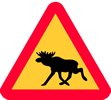
If you need to get from Islington to Camden on a sunny morning you could do worse than take a stroll along the Regent's Canal. From Angel tube, cross the large junction to Liverpool Road. Head up Liverpool Road a short way and turn left by the far side of Sainsbury's onto Tolpuddle Street, walk the length of this thoroughfare, at the end, turn right and sharp left onto Maygood. Walk through the Maygood Estate (a perfectly tasteful Islingtonian estate, in the afternoon the teenagers play football in the basketball courts [how obtuse?] and shout obscenities about a transvestite on the new series of Big Brother "No but mate, we all fancied her till we found out", "Yeah, I f* did" -- which is honest of them). Cross Muriel Street and head down the ramp to the canal. You are now at the west end of the Islington Tunnel, you can only head away from the rising sun. Head west.
The air is thick with the scents and pollen of mayflowers and cow parsley; hayfever sufferers would be wise to take a Claritin or somesuch before the journey. Robins and wrens chatter in the bushes. Blackbirds root noisily through the leaf litter. As you walk along the canal look out for the various families of ducks, moorhens, and coots that swarm busily, chasing midges and other insects along the mirrored surface of the water, shattering the reflections of cotton-wool clouds in their wake. Lone fishermen's eyes droop contentedly as their rods dip to the water, floats bobbing gently, unbothered by fish. Cyclists' bells chime as they clatter under the bridges: Caledonian Road, York Way (where I doff my cap to the Macmillan building). At Camley Street nature garden look out for the terrapin that sometimes floats in the surface of the water or basks on a floating beam alongside the ducklings.
The canal now finds the north in its bearings. At St Pancras Lock a pair of coots brood a late clutch of eggs in the weir. Flotsam and jetsam lap against the lock gates, floating rafts break through each time a boat passes. Where on the earlier, western, stretch cow parsley and alexanders were the most prominent flowers, the verges on this northwestern segments are overshadowed by nodding spotty stems of hemlock, some reaching eight or nine feet tall. Pass the man doing tai chi, well it looks like tai chi, but I think he is a mental making it up, though I am no expert. You'll pass The Constitution (affectionately labelled The Con in the graffiti on the canalside wall), which I am reliably informed is a good pub although I have yet to sample it's delights (including a free barbecue on a Sunday night and a spacious waterside garden). Go under St Pancras bridge, there is another floating beam, in the winter a pair of red crested poachards (the only duck of the region with a bright red bill) could often be seen perched there. The other day, this beam looked to be crowded with a family of mallards, on closer inspection they turned out to be a covey of pigeons. As I got closer, the pigeons were rattled and tried to take to the air, but before they could clear the area this week's animal of the week swooped in, a Larus argentatus (herring gull), its wings, feet, neck and head all outstretched to give maximum coverage. As the gull bowled into the panicked pigeons, one was knocked into the water. The pigeon managed to haul itself onto the beam again, but now waterlogged it could not take to the air. The gull went up to it and knocked it into the water again. The pigeon flapped pitiful trying to distance itself from it's marauder. But the gull swooped down, ducking the hapless bird once, twice, three times. Eventually, warn out, waterlogged, and beaten, the pigeon throbbed limply in the middle of the canal, it's time was up and soon the gull would eat.
The beam generally isn't that interesting, so you'll probably keep walking, under Royal College street, then the very narrow Camden Road bridge, pedestrians and cyclists generally whoop or whistle as they enter to avoid the inevitable crash (I typically whistle a southern gospel song as I pass through the UV lit tunnel -- they use UV I guess to stop the junkies finding their veins). Here the quality of walk deteriorates, young punks drinking cider at eight in the morning sit on the lock outside the TVam/MTV building, where herring gulls perch atop masonry eggs, looking for all the world as though they are trying to hatch an outsized chick. Piles of vomit, discarded beer cans, half eaten kebabs (from Zula Vegetarian and Chicken which once was Tasty Corner), the detritus left by Camden's crapulous rogues.
Next week: Camden to Islington in the afternoon, 214 or 274?
 So, Portugal eh, apparently football is the national sport of Portugal, just as, after kabaddi, it is in England. But what about an animal to symbolise Portugal, welcome this week’s animal of the week Sardina pilchardus (sardine, sardinha [Portuguese]). Given England's love for these little beasts served from an iconic rectangular tin, you might be excused for thinking that they could be this nation's animal too, but herein lies the fundamental difference between these two outposts of western Europe, the Portuguese love them fresh.
So, Portugal eh, apparently football is the national sport of Portugal, just as, after kabaddi, it is in England. But what about an animal to symbolise Portugal, welcome this week’s animal of the week Sardina pilchardus (sardine, sardinha [Portuguese]). Given England's love for these little beasts served from an iconic rectangular tin, you might be excused for thinking that they could be this nation's animal too, but herein lies the fundamental difference between these two outposts of western Europe, the Portuguese love them fresh.


